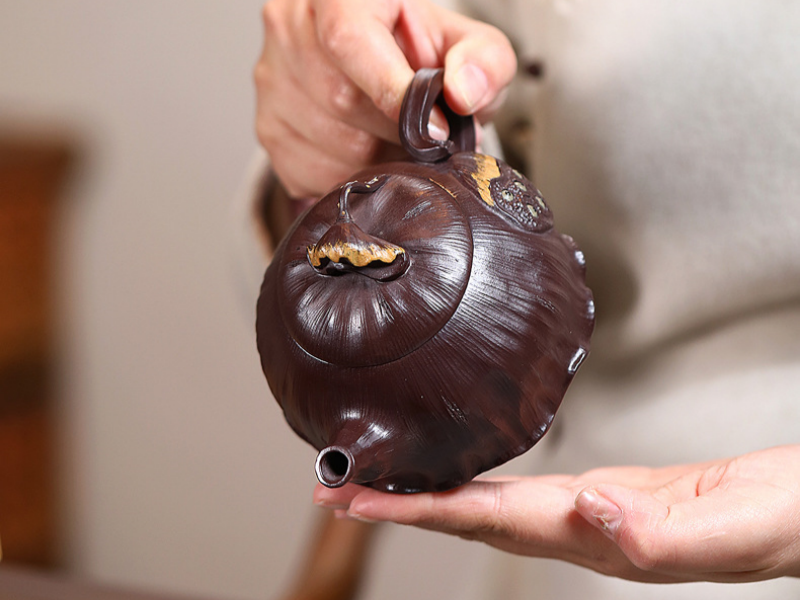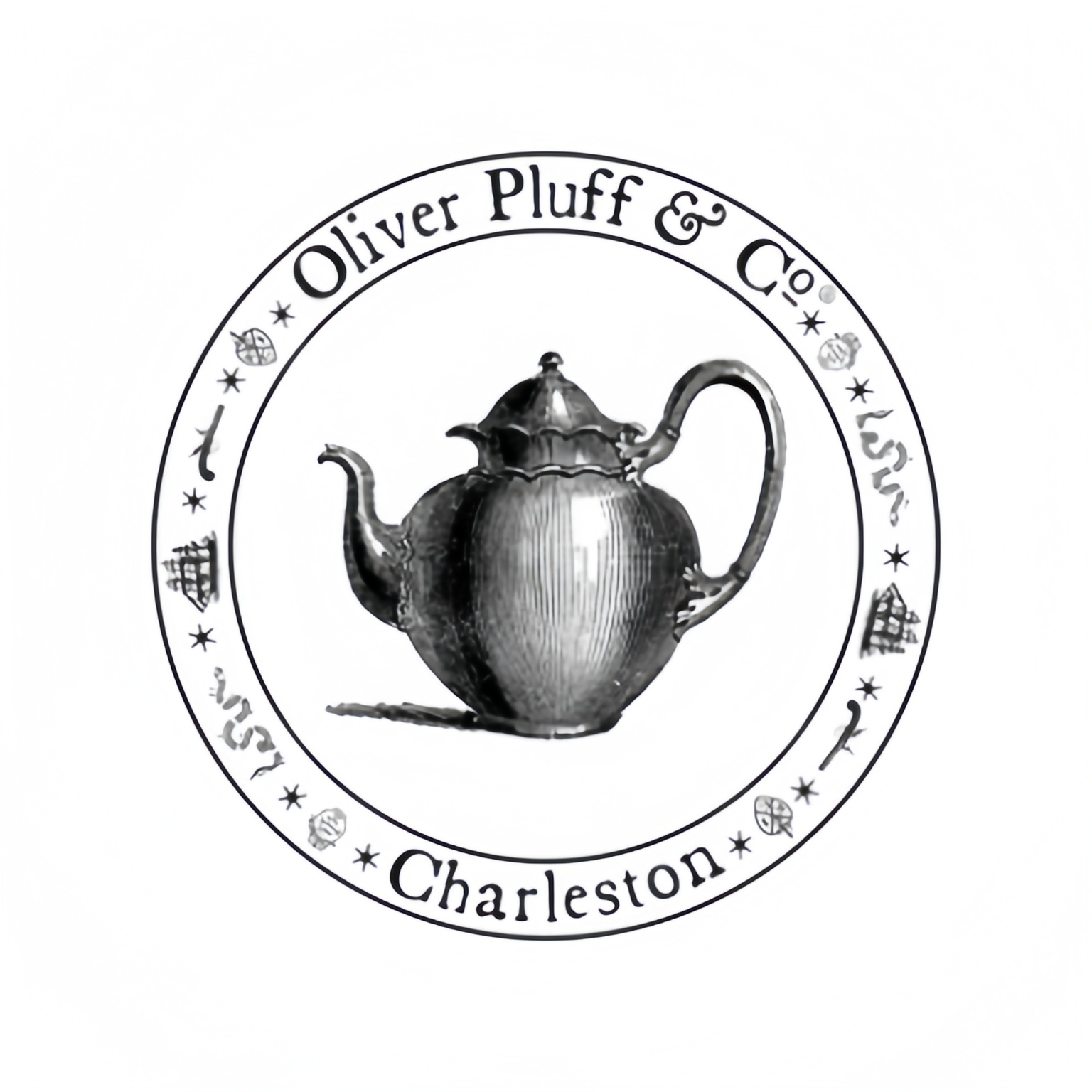Product Detail
Ultimate guide to Yixing Purple Clay Teapots — How to Choose Your Tea Companion
Yixing purple clay teapots epitomize the essence of the historical fusion between careful craftmanship and particular utilitarian purposes. The Yixing purple clay teapots have been favored by countless tea lovers for more than 500 years. Its unparalleled role in Chinese tea culture has made Yixing purple clay teapots the best tea companion for nearly everyone. Zisha (literally “purple sand”) teapots are teapots made from Yixing clay found near Yixing City in the eastern Chinese province of Jiangsu. From the Ming Dynasty, Yixing teawares have been preferred by many serious tea drinkers and teapot collectors.
Golden Gourd Calabash Assembly
The Golden Gourd Calabash pattern relates to abundance and prosperity in Chinese spiritual traditions. The rotund gourd-like form of these teapots reflect this ideology. Golden Gourd Calabash teapots feature familiar bulbous, pot-bellied designs offering prosperity and the harvest. These teapots deep curves regulate temperature and distribute fine tea leaves easily. In essence, Golden Gourd Calabash teapots are excellent for optimum heat retention and tea movement. Perfect for aged oolongs and pu-erhs.

Graceful Lotus Blossom Series
Influenced by the sacred lotus flower,these teapots represents purity and enlightenment. The Lotus Bloom series is characterised by the flowing petal-like lines and lines and usually the use of some lotus motif featured as a carved or moulded detail of othe clay body.Lotus Bloom series are popular with white and green teas since the design philosophy corresponds with pure, delicate nature of the tea.
Scale of the Splendid Dragon
The Dragon Scale design is associated with strength, wisdom and imperial heritage. These teapots have a fine scale-like textured surface, providing not only an interesting aesthetic, but a functional quality as well. Dragon Scale Yixing teapots have enhanced surface area from the texture, making them more interactive with tea oils and creating a more nuanced seasoning for the teapot over time.

Kikkō (亀甲)
Bamboo Grove pieces commend the virtue of plant.This expression of teapot frequently has handles, spouts, or some other surface features taken from the characters of the plant’s growth The plant of bamboo has been an identifying scholarly and cultural characteristic since,and this motif government the beginning of literati’s teapot.
Imperial Phoenix Tail Cream of the Crop
The Phoenix Tail signifies rebirth, nobility and celestial beauty. Phoenix Tail teapots are known for sweeping, honed lines which evoke the stately tail feathers of the phoenix. They often display noble proportions and graceful lines, and sometimes sport subtle feather-like textures or motifs.

Application Scenario Enhancement
What sector/industry are they applicable to?
So which industries are Yixing purple clay teapots commonly used in?
What are some of the common problems that are solved?

FAQ-Frequently Asked Questions
Selection and comparison guide
Comparison with Other Teapot Materials
| Material | Heat Retention | Flavor Enhancement | Durability | Price Range | Maintenance |
|---|---|---|---|---|---|
| Yixing Clay | Excellent | Superior | Very High | $50-$10,000+ | Minimal |
| Porcelain | Good | Neutral | High | $20-$500 | Easy |
| Glass | Fair | Neutral | Medium | $15-$200 | Easy |
| Stainless Steel | Good | None | Very High | $25-$150 | Easy |
| Cast Iron | Excellent | Minimal | High | $40-$300 | Moderate |
Data source: International Organization for Standardization (ISO) Tea Preparation Standards ISO 3103:2019 and China National Tea Quality Standards GB/T 14456-2008 Reference: https://www.iso.org/standard/73224.html
Model selection guidance by tea type

Real-life applications and customer success stories
Case study 1 – Luxury resort program
Location: Four Seasons Resort, Hangzhou Objective: Improve the authentic Chinese cultural immersion experience for international guests Execution: Deployed Yixing Golden Gourd Calabash teapots in daily tea ceremonies
Outcomes: • 85% increased foreign guests’ participation in cultural activities • Average guest rating for cultural experience improved from 3.2 to 4.7 out of 5 • 30% increased repeat booking rate attributed to high cultural authenticity
Guests feedback: “The daily tea ceremony with the beautiful gourd-shaped teapot has become the highlight of our stay. Not only did we learn about the Chinese culture, the tea we learned to brew was the most flavorful we’ve ever had” – Sarah M, Four Seasons international guest
Case study 2 – Managing corporate wellness
Location: Tech Innovation Corp, Shanghai Objective: Reduce employee stress and improve wellness in the workplace Execution: Weekly mindfulness coaching sessions featuring Classic Bamboo Grove teapot
Result metrics: • 40% decrease in reported workplace stress levels • 25% improvement in cross-team collaboration scores • 60% participation rate in quarterly employee wellness programs
Employees comments: The calming bamboo-designed teapot makes a perfect ambience for our mindfulness breaks. The ritual of tea brewing helps us destress from the work day and restores our bonds with our colleagues.
Case study 3 – Promoting cultural education
Location: Confucius Institute, New York Application: Teach Chinese culture through tea ceremony Teapots engaged: Imperial Phoenix Tail; Elegant Lotus Bloom
Success metrics: • 200+ students mastered traditional tea preparation • 90% participants surveyed were able to improve and retain knowledge of Chinese culture • 5 additional local Confucius centers have replicated the model
Instructor notes: The symbolic depictions of phoenix and lotus help my students relate to the deeper cultural meanings of Chinese tea traditions, making abstract ideas tangible and memorable.
Case study 4 – Leading a premium tea shop to success
Location: Ancient Leaves Tea House, San Francisco Strategy: Featured Yixing teapot styles in different themed tea tastings Teapot collection: all of the five cluster page designs
Business results: • Premium tea sales increased by 150% • 45% retention rate for new tea club members • Average customer transaction value grew by 80%
Owner’s story:” Different teapot designs draw different types of customers. The Dragon Scale attracts distinguished ages tea collectors. The Lotus Bloom attracts younger customers interested in mindfulness and wellness.”
Conclusion: picking your perfect Yixing companion
Selecting a Yixing purple clay teapot constitutes a personal journey of yin yang where one must combine practical considerations with aesthetic preferences and cultural appreciation. Whether you practice the prosperous gourd-shaped Golden Gourd Calabash, the pure bloom-shaped Elegant Lotus Bloom, the mighty majestic Majestic Dragon Scale, the scholary bamboo-shaped Classic Bamboo Grove, or the noble Imperial Phoenix Tail, each Yixing design has its own unique benefits and potential for character development.
Investing in a real Yixing teapot is an investment that continues once you’ve made your purchase; you’re investing in a brewing companion that will grow and develop alongside you and your brewing practice for years to come. And remember that the “right teapot” is the one that fits your individual personal tea preferences, aesthetic tastes, and cultural interests.
From luxury hospitality apps to private meditation workshops, from corporate wellness sessions to cultural education programs, Yixing purple clay teapots are marrying ancient traditions with modern demands. Their incredible ability to alter the taste of the tea as well as serving as a utilitarian piece of art make them valuable additions to any tea lover’s collection.
Start your Yixing journey today, and see how these fine vessels can transform your everyday tea practice into a cultural one with meaning that only builds upon itself, layer upon layer, over time.




















Cameron Smith –
It has been fun watching the clay seasoning process. Every week the flavor profile gets incrementally better.
Fatou Diallo –
Bye bye coffee, hello obsessiveness over tea. This pot makes even humble green tea taste like high-end restaurant quality.
Vincent Lee –
Canadian winter must have, keeps my tea perfectly warm during those long cold evenings by the fireplace.
Haley Johnson –
The epitome of simple elegance. There’s no excess, nothing’s wasted; just great, functional beauty that performs well.
Ruby Martinez –
The tea ceremony just got next upgrade. My friends from Seattle are already asking where can they get one.